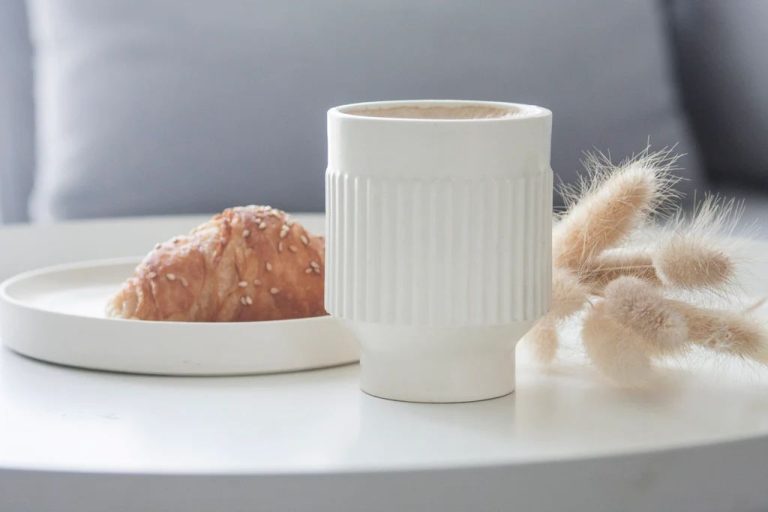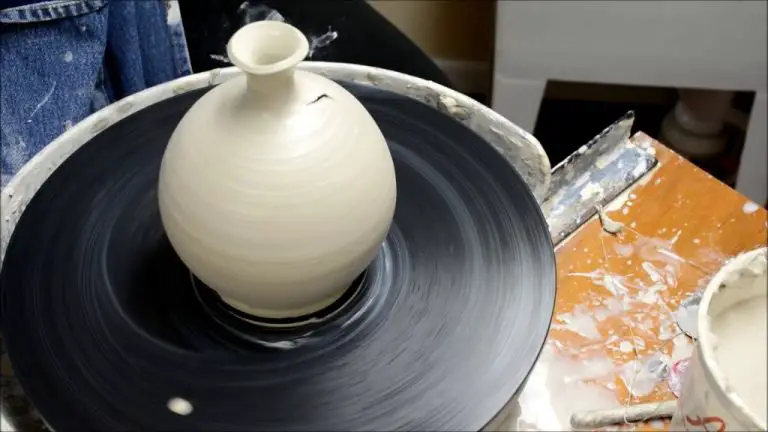What Is The Best Air Dry Clay Recipe?
Air dry clay, also called “no bake” clay, is a crafting medium made of a mixture of ingredients that harden and become durable at room temperature. Air dry clay allows modeling and sculpting without requiring oven baking. It’s a great option for beginners and hobbyists who want to create pottery, miniatures, jewelry, and more at home without a kiln.
The most popular recipes for homemade air dry clay use a base ingredient like flour, glue, or cornstarch, combined with additives like water, salt, cream of tartar, and oil. Recipes can be customized to produce clay with different textures, colors, and drying times.
The benefits of air dry clay include its simplicity, versatility, and safety. Since it doesn’t require high heat to cure, it’s a good choice for children’s crafts. The clay can be rehydrated while soft, allowing for repairs and changes. Air dry clay is also lightweight and economical.
The drawbacks are that air dry clay is generally less durable than baked polymer or ceramic clays. Pieces may chip, crack, or break more easily. The clay can also be messy and sticky to work with. Proper storage is important to maintain usability when a project spans multiple sessions.
Ingredients
The main ingredients for air dry clay recipes are simple pantry staples you likely already have on hand.
The key ingredients are:
- Flour – All-purpose flour or a mixture of all-purpose and cornstarch can be used as the base. The starch in the flour gives the clay its sticky binding properties when mixed with water.
- Salt – Just a pinch of table salt is needed. Salt increases the strength and durability of air dry clay.
- Water – The amount of water controls the consistency and texture. Add gradually until the desired texture is reached.
- Oil – A small amount of vegetable, olive or mineral oil helps keep air dry clay flexible and smooth.
- Cream of tartar – Optional but helps strengthen and extend the life of projects made with air dry clay.
Basic Recipe
The most basic air dry clay recipe only requires a few simple ingredients that most people have on hand. You’ll need:
- 2 cups flour
- 1 cup salt
- 1 cup water
- 1 tablespoon vegetable oil
This easy clay recipe is a great starting point if you’re new to making your own air dry clay.
It results in a smooth clay that air dries to a nice hard finish within 24 to 72 hours. The flour acts as the base, while the salt hardens the dough. The water enables the ingredients to blend properly into a clay-like dough, and the oil makes it more pliable and workable.
To make the basic air dry clay recipe:
- Combine the flour and salt in a large mixing bowl.
- Gradually pour in the water and oil.
- Mix and knead with your hands until it forms an elastic, smooth dough.
If the clay is sticky, add a bit more flour. If it starts to crack, add drops of water. Knead for a few minutes until you achieve the perfect consistency. And that’s it – you now have a simple homemade air dry clay ready for crafting and creating!
Advanced Recipes
Experienced clay artists often experiment with adding ingredients to create air dry clay with unique properties. Some commonly used additives include:
Recipes with cream of tartar or cornstarch
Adding a teaspoon of cream of tartar or cornstarch per cup of flour will result in air dry clay that is smoother, more pliable, and takes longer to dry. The cream of tartar or cornstarch acts as a binding agent.
Recipes with additional ingredients like glue or glycerin
Some recipes call for small amounts of white glue, glycerin, or even liquid starch. A teaspoon or two of these ingredients can help strengthen the clay and prevent cracking as it dries. Too much glue or glycerin will make the clay sticky and take much longer to harden.
Texture
One of the great things about homemade air dry clay is that you can customize the texture to your preferences. Air dry clay can range from very smooth to quite rough. Here’s how to adjust your recipe to achieve different textures:
Smooth Texture: For a clay with a smooth, fine texture, use more glue in your recipe. Glue helps bind the ingredients together into a cohesive, smooth mass. Try using 2 parts glue to 1 part baking soda and 1 part cornstarch.
Rough Texture: If you want a clay with a more rough, grainy texture, use less glue in the mixture. The baking soda and cornstarch will be more noticeable, creating a grittier feel. Try using 1 part glue to 1 part baking soda and 1 part cornstarch.
You can also add small amounts of ingredients like sand or sawdust to roughen up the texture. Just add teaspoons at a time until you achieve the coarseness you want.
Play around with the ingredient ratios to find your perfect air dry clay texture. The great thing is you can remake a batch until you get it just how you like it!
Color
Air dry clay can be colored in a variety of ways to achieve different looks and effects in your projects.
Paint
Acrylic paint is commonly used to color air dry clay. Once the clay is formed, simply brush or sponge acrylic paint onto the surface. Allow the paint to dry completely before handling the clay further. Acrylic paint creates vibrant, solid colors on clay.
Food Coloring
To color clay naturally, knead a few drops of liquid food coloring into the clay before shaping it. Food coloring provides translucent colors in clay. Start with just a drop or two and add more as needed to achieve the desired hue.
Chalk
Powdered chalk can also be used to tint air dry clay. Rub pieces of chalk over the surface of the shaped clay to leave behind a wash of color. Alternatively, grind chalk into a powder and knead it into the clay to color it through. Chalk creates a muted, matte effect.
Natural Clay Colors
Some air dry clay varieties come in natural earthen tones like terracotta red, brown, or gray without needing additional colorants. These pre-colored clays are nice for achieving an organic, earthy look in projects.
Drying Time
When working with air dry clay, the drying time is an important consideration. Here are some key factors related to how long it takes air dry clay creations to fully harden:
Factors Affecting Drying Time
The thickness and size of the clay piece will impact drying time. Larger, thicker pieces take longer to dry compared to smaller, thinner pieces. Using a porous material like terra cotta or wire frames allows airflow and can speed up drying.
Environmental conditions like temperature, humidity, and airflow also affect drying time. Warmer, drier environments with good airflow lead to faster drying. Cool, humid environments slow down the drying process.
Average Drying Times
On average, thin clay pieces 1/4-inch thick or less can dry in 24 hours or less. Pieces 1/2-inch to 1-inch thick can take 1-3 days to fully dry. Large, thick pieces over 1-inch thick may take 3-5 days or longer to completely harden.
Quicker Drying Methods
To shorten drying time, use a fan or hair dryer to blow air over the clay intermittently. Place near a window or vent to increase airflow. Use a dehumidifier or put the clay in an oven on the lowest “warm” setting with the door propped open. Just avoid excess heat, which can cause cracking.
With some planning and testing of techniques, you can find the right approach to dry air dry clay projects efficiently for your needs.
Storing Clay
Once you’ve made your air dry clay, proper storage is important to prevent it from drying out and hardening. Air dry clay must be stored in an airtight container or sealed plastic bag. Make sure to squeeze out any air before sealing the container.
For short term storage of a few weeks, an airtight container kept in a cool, dry place like a cupboard or pantry is sufficient. For longer term storage of 1-2 months, refrigeration is recommended. The cold temperature of the refrigerator will slow down the drying process and keep your clay usable for longer.
You can also store air dry clay in the freezer for several months. Make sure to wrap the clay tightly in plastic wrap or place it in an airtight freezer bag before freezing. Allow frozen clay to thaw completely before opening and using again. The freezing process will not harm the clay. With proper storage methods, you can keep air dry clay fresh for months.
Projects
Air dry clay is versatile and can be used to create all kinds of fun and easy projects. Here are some ideas for beginner-friendly projects:
Figurines
Sculpting miniature figurines is one of the most popular uses for air dry clay. Make people, animals, mythical creatures, or anything else you can imagine. Figurines make great gifts and decorations.
Jewelry
Roll out thin coils of clay to make beads for necklaces and bracelets. Cut out shapes to make pendants, charms, and earrings. Personalize jewelry with textures, stamps, or paint.
Bowls
Shaping clay into simple bowls is easy. Use plastic or glass bowls as molds to get smooth, uniform shapes. Add texture by pressing designs into the soft clay before it dries.
Other simple projects include rings, picture frames, plaques, magnets and more. Let your creativity run wild! Air dry clay is forgiving and fun for crafters of all skill levels.
Conclusion
Making your own air dry clay at home is a fun, creative project that has many benefits. This article has covered the basic ingredients, recipes, textures, colors, drying times, storage methods, and project ideas for homemade air dry clay. The key points to remember are:
- The basic recipe only requires 2 ingredients – baking soda and corn starch.
- You can customize textures and colors by adding additional ingredients like flour, salt, acrylic paints, or liquid starch.
- Letting clay air dry takes 1-3 days. Drying time depends on the thickness.
- Store unused clay in a sealed container to prevent drying out.
- Air dry clay is great for making jewelry, figures, decorative bowls and boxes, wall art, and more.
The benefits of making your own air dry clay include cost savings, customizing textures and colors, and the satisfaction of creating your own DIY crafting material. Homemade clay is safe, non-toxic, and fun for creative projects with kids and adults.





